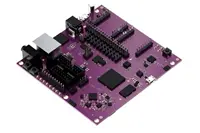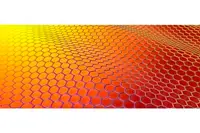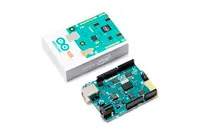Electronics News
Archive : 22 October 2015 год
 Queen’s University Belfast will unveil its electric DeLorean, on the exact date that Marty McFly went Back to the Future in the iconic Belfast-built car
Queen’s University Belfast will unveil its electric DeLorean, on the exact date that Marty McFly went Back to the Future in the iconic Belfast-built car
The DeLorean was famously modified as a time machine in the Back to the Future movies, the second of which saw Marty McFly travel to 21 October 2015 to prevent his future son being sent to prison.
Queen’s and NIE Networks have unveiled their version of the famous car, which students and staff have modified as a hi-tech electrical vehicle – the first of its kind in the UK or Ireland. It is thought to be the first DeLorean to be built in Northern Ireland since production came to a halt at DeLorean’s Belfast factory in 1983.
Dr David Laverty, who led the project said: “The electrification of transport is a major global challenge, so projects like the Queen’s Electric DeLorean are crucial in equipping young engineers with the knowledge and expertise to build the electric vehicles of the future.
“This project was about modifying a car into an electric vehicle, but we wanted to do it in style. The DeLorean was the obvious choice because of its strong connection to Belfast and its starring role in the Back to The Future movies.”
Gordon Parkes, HR Director at NIE Networks, said: “We’ve supported this project because it’s an original and innovative way of engaging and promoting Science, Technology, Engineering and Maths (STEM) subjects to school children and students.”
Local school children will get a preview of the car on Wednesday morning, with the opportunity to find out more about the Electrical Engineering courses on offer at Queen’s, while members of the public can find out more about the Queen’s Electric DeLorean project at a free public lecture at the Ulster Museum at 6pm.
Author
Tom Austin-Morgan
Source: www.newelectronics.co.uk
 Imagination Technologies has announced that it is working on a Creator board for the IoT market, to accompany its Creator Ci20 microcomputer. It is called Creator Ci40 and features an innovative MIPS-based chip.
Imagination Technologies has announced that it is working on a Creator board for the IoT market, to accompany its Creator Ci20 microcomputer. It is called Creator Ci40 and features an innovative MIPS-based chip.
The chip at the heart of the Creator Ci40 development board has been manufactured by GLOBALFOUNDRIES on a 40nm low power process node. Imagination claims that other boards for IoT tend to reuse chips made for mobile or networking devices, but says it has created a custom IoT subsystem that has been tuned for a range of IoT requirements and connectivity standards. For example, the chip has built-in wireless capabilities, supporting both hi-speed Wi-Fi but also low energy Bluetooth.
The chip features a dual-core MIPS interAptiv CPU; each interAptiv CPU is said to implement hardware multithreading optimised for maximum efficiency and low power consumption.
The development board is expected to be released later in 2015.
Author
Tom Austin-Morgan
Source: www.newelectronics.co.uk
 ARM has acquired the product portfolio and other business assets of Carbon Design Systems (Carbon), a supplier of cycle-accurate virtual prototyping solutions. ARM claims that this combination of assets and expertise will enhance its capability in SoC architectural exploration, system analysis and software bring-up.
ARM has acquired the product portfolio and other business assets of Carbon Design Systems (Carbon), a supplier of cycle-accurate virtual prototyping solutions. ARM claims that this combination of assets and expertise will enhance its capability in SoC architectural exploration, system analysis and software bring-up.
"Early stage virtual prototyping of complex SoCs is now mandatory for leading silicon vendors, as demonstrated by the success of ARM Fast Models," said Hobson Bullman, general manager, development solutions group, ARM.
"The integration of Carbon’s virtual prototyping products into the ARM portfolio will deliver access to ARM IP earlier in the design cycle. This builds on the current industry leading solutions to enable further design optimisation, time-to-market and cost-efficiency gains for our partners,” Bullman continued.
Carbon has created a library of ARM processor and system models that can be extended to create cycle-accurate virtual prototypes of any new ARM-based SoC. The technology relies on RTL compilation, to ensure perfect functional and cycle accuracy. This is essential when evaluating target benchmark performance in the earliest stages of SoC design.
Carbon products will now be marketed as ARM Cycle Models and will remain available from ARM IP Exchange. ARM will also continue to offer Carbon’s solutions for model generation and SoC analysis.
Pic: Hobson Bullman, general manager, development solutions group, ARM
Author
Tom Austin-Morgan
Source: www.newelectronics.co.uk
 The CBI says that raising total research and development spending to 3% of GDP will help achieve this, buttressed by a dedicated and long-term industrial strategy. Both are growth-enhancing measures that contribute to increased productivity.
The CBI says that raising total research and development spending to 3% of GDP will help achieve this, buttressed by a dedicated and long-term industrial strategy. Both are growth-enhancing measures that contribute to increased productivity.
The CBI is calling on ministers to double the budget for Innovate UK after new research by the employers’ group revealed that the Government spends just 0.49% of GDP on R&D – the lowest among the G8 countries.
John Cridland, CBI director-general, said: “Our research shows that innovation investment has never been more important, given its effect on enhancing productivity. While our economy is doing well, we must not be complacent, as we cannot afford to rest on our laurels while our peers pace ahead.
“Instead we need to build on our research excellence by fuelling the UK’s innovation ecosystem with investment, fresh ideas and skills.”
In its Autumn Statement submission to the Treasury, the CBI is calling on the Government to set out a coherent framework so innovation boosts the capacity of the economy to produce more in the long term.
They are also asking the government to deliver a package on business rates reform that makes the regime, simpler, fairer and more competitive; fix the funding ladder for medium-sized businesses to ensure they can grow and contribute more to the economy; ring-fence revenue from the apprenticeships levy and introduce an independent ‘Levy Board’ to set the rate based on sound economic evidence; avoid further restrictions on skilled migration, which would harm the UK’s ability to attract investment and compete globally; and continue cross-government efforts to promote exports.
Pic: John Cridland, CBI director-general
Author
Tom Austin-Morgan
Source: www.newelectronics.co.uk
 Researchers at the University of Cambridge and Cambridge-based company Novalia have developed a low-cost, high-speed method for printing graphene inks using a conventional roll-to-roll printing process. This method could open up a range of practical applications, including inexpensive printed electronics, intelligent packaging and disposable sensors.
Researchers at the University of Cambridge and Cambridge-based company Novalia have developed a low-cost, high-speed method for printing graphene inks using a conventional roll-to-roll printing process. This method could open up a range of practical applications, including inexpensive printed electronics, intelligent packaging and disposable sensors.
Graphene’s flexibility, optical transparency and electrical conductivity make it suitable for a range of applications. Although numerous laboratory prototypes have been demonstrated around the world, widespread commercial use of graphene is yet to be realised.
Dr Tawfique Hasan of the Cambridge Graphene Centre (CGC), said: “We are pleased to be the first to bring graphene inks close to real-world manufacturing. There are lots of companies that have produced graphene inks, but none of them has done it on a scale close to this.”
Hasan’s method is said to work by suspending tiny particles of graphene in a ‘carrier’ solvent mixture, which is added to conductive water-based ink formulations. The ratio of the ingredients can be adjusted to control the liquid’s properties, allowing the carrier solvent to be mixed into a conventional conductive water-based ink to reduce the resistance. The same method works for materials other than graphene, including metallic, semiconducting and insulating nanoparticles.
Currently, printed conductive patterns use a combination of poorly conducting carbon with other materials, most commonly silver, which is expensive. Silver-based inks are said to cost £1000 or more per kilogram, whereas the graphene ink formulation is claimed to be 25 times cheaper. Additionally, graphene and other carbon materials can be recycled whereas silver cannot. The new method uses cheap, non-toxic and environmentally friendly solvents that can be dried quickly at room temperature, reducing energy costs for ink curing. Once dry, the ‘electric ink’ is also waterproof and is said to adhere well to its substrate.
The graphene-based inks have been printed at a rate of more than 100m per minute, which is in line with commercial production rates for graphics printing, and faster than earlier prototypes.
Hasan’s group tested the method on a typical commercial printing press, which required no modifications in order to print with the graphene ink. In addition to the new applications the method will open up for graphene, it could also initiate entirely new business opportunities for commercial graphics printers, who could diversify into the electronics sector.
“The UK has always been strong in the printing sector, but mostly for graphics printing and packaging,” said Hasan. “In addition to cheaper printable electronics, this technology opens up potential application areas such as smart packaging and disposable sensors, which to date have largely been inaccessible due to cost.”
In the short to medium term, the researchers hope to use their method to make printed, disposable biosensors, energy harvesters and RFID tags.
Author
Tom Austin-Morgan
Source: www.newelectronics.co.uk
 Intel, in conjunction with the founders of Arduino, has announced the release of Genuino 101, a learning and development board for entry-level makers and education environments. Genuino 101 is claimed to be the first widely available development board based on Intel’s CurieTM module.
Intel, in conjunction with the founders of Arduino, has announced the release of Genuino 101, a learning and development board for entry-level makers and education environments. Genuino 101 is claimed to be the first widely available development board based on Intel’s CurieTM module.
Josh Walden, senior vice president and general manager of Intel's New Technology Group said: "Empowering budding entrepreneurs and young students has always been a priority for Intel, and by partnering with Arduino, we are bringing the power of Intel to a new generation of makers."
Genuino 101 can also be used to prototype technology-based products that connect and compute. It is said to be priced comparably to entry-level microcontroller boards and features an accelerometer, gyroscope and Bluetooth Smart connectivity.
The board joins Arduino's open-source electronics platform, which combines freely available hardware designs, an ecosystem of third-party extension components, and a software programming environment for designers to create interactive projects.
Massimo Banzi, co-founder and CEO, Arduino, said: "Through our work with Intel, we're able to reach a global community of entry-level makers and students with a comprehensive introduction to physical computing and now with a more advanced, powerful technology solution that will help them bring their creative visions to reality."
Author
Tom Austin-Morgan
Source: www.newelectronics.co.uk

